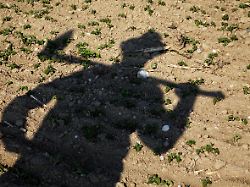“Increasing demands”
According to the study, the number of farms will be halved by 2040
January 12, 2024, 3:18 p.m
Listen to article
This audio version was artificially generated. More info | Send feedback
In the wake of the farmers’ protests, a study examines the reasons for the anger: Small family businesses in particular have to fear for the future. The decline of farms in agriculture is progressing rapidly.
According to DZ Bank estimates, the number of agricultural businesses in Germany will more than halve by 2040. According to a current study, small farms are increasingly having to give way to large industrial companies due to cost pressure. “Increasing demands due to environmental protection, animal welfare and business management are putting more and more strain on farms. Added to this is the shortage of skilled workers and the often unresolved succession planning in family businesses.”
DZ Bank industry expert Claus Niegsch estimates that the number of around 256,000 farms in 2022 will fall to around 100,000 in 2040. With roughly the same agricultural area, the average size of a farm is expected to more than double from 64.8 hectares to 160 hectares in 2040. In the long term, more and more large, capital-intensive companies with modern technology would shape the industry. “The family farm is increasingly on the verge of extinction.”
The conversion of agricultural businesses into efficient, digitalized companies that also meet growing environmental protection and animal welfare requirements will require high investments – which will increase the pressure for greater size. But there are niches, according to the study. “Especially organic farming and other specializations, but also the cooperative idea, offer opportunities.”
In 1949 there were still 1.8 million farms
The death of farms in Germany has been going on for decades. According to DZ Bank, there were still 1.8 million agricultural businesses in 1949, i.e. around seven times as many as in 2022, while the farm area at that time of 7.4 hectares was only a fraction of what was recently common. In addition, farmers’ sales prices have risen more slowly in the long term than general consumer prices, according to DZ Bank. “Farmers can currently charge almost 50 percent more for their products than they did over 30 years ago. However, consumer prices have almost doubled since 1991.”
The current farmers’ protests against planned cuts in agricultural diesel drew attention to the agricultural sector, which has relatively little economic importance but is important for the domestic food supply. While the share of agriculture in German gross value added was 3.3 percent in 1970, in 2022 it was only 1.0 percent, according to DZ Bank. “This means that the loss of importance in agriculture was more intense than in industry.”
